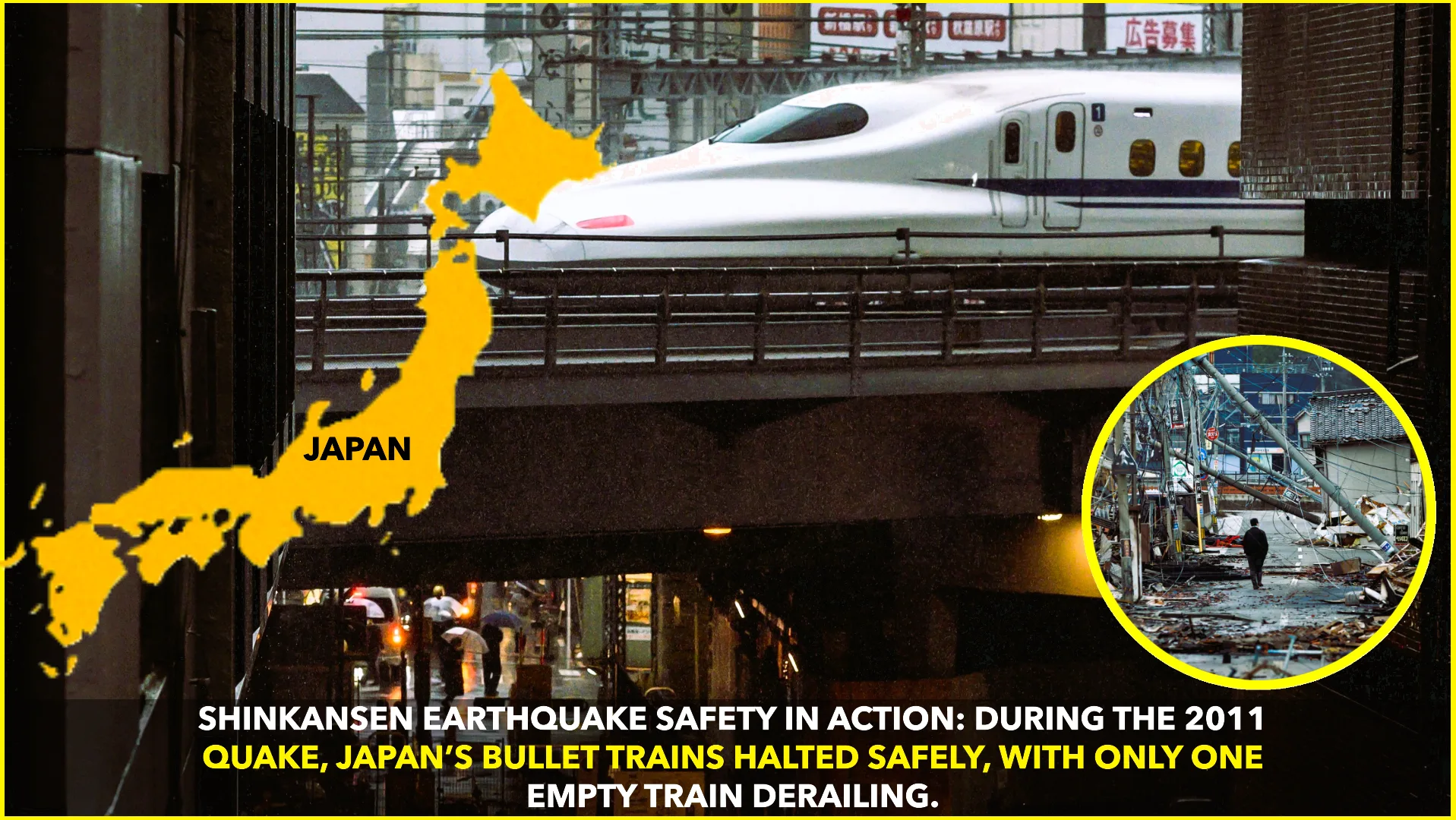On March 11, 2011, Japan endured one of its most catastrophic natural disasters in living memory: the 9.0 magnitude Great Tōhoku Earthquake. Yet, amid widespread devastation, one symbol of technological resilience stood out—the Shinkansen bullet train network. In the face of colossal seismic forces and an ensuing tsunami, the Shinkansen’s sophisticated early warning system margin of safety delivered critical seconds that literally saved lives.
Advanced Warning System: Speed Is Safety
Long before the disaster, JR East had been equipping Shinkansen lines with seismograph-based early warning technology. When the quake struck, a seismometer stationed off the coast of Kinkasan in Miyagi Prefecture detected the initial P-waves—rapid, less destructive tremors that precede the more destructive S-waves—some 12 to 15 seconds before strong shaking reached Sendai. The system automatically cut power to the Tokyo–Tōhoku Shinkansen and triggered emergency braking across all operational trains. Consequently, all 33 passenger trains stopped safely with zero injuries JR Easteasts.info.
Railway analysts and transport safety bodies confirmed that only a single unmanned test train derailed. Despite this, no casualties occurred, a testament to the robust design and preparedness of the system jtsb.mlit.go.jpeasts.infoJapan Wire by KYODO NEWSThe World from PRX.
Integrated Safety: Structural Reinforcements
Beyond the warning system, infrastructure upgrades fortified the network against seismic shocks. Shinkansen viaducts across the Tōhoku route were retrofitted to resist shear and flexural stresses, especially following the 1995 Great Hanshin and 2004 Chūetsu earthquakes. These anti-seismic enhancements prevented catastrophic collapse during the 2011 quake easts.infoMineta Transportation Institute. Additional measures like sleeper plugs and L-shaped derailment guards were incorporated to keep train cars on the rails, even under intense shaking Mineta Transportation Institute.
Rapid Recovery: Resilience in Action
Post-quake, more than 8,500 engineers mobilized to repair shattered tracks, bridges, tunnels, power lines, and stations. Their efforts brought the Tōhoku Shinkansen back into full service just 49 days after the disaster—a striking feat of recovery that reconnected devastated regions and symbolized societal endurance easts.infoCouncil on Foreign Relations.
Lessons for the World
Japan’s integrated approach—rapid detection, immediate response, and resilient infrastructure—has become a global benchmark. Institutions worldwide studying disaster response have pointed to this example as an inspiration for how high-speed rail systems can be engineered to withstand seismic events while protecting passengers The World from PRXCouncil on Foreign Relations.
Looking Ahead: Continuous Innovation
While the Shinkansen has maintained a flawless safety record—no passenger fatalities in over 60 years of operation, despite Japan’s frequent earthquakes and typhoons—the network continues to evolve. For example, the experimental ALFA-X train is being tested on the Tōhoku line to further enhance speed and technology integration Wikipedia. As seismic threats persist, Japan’s vigilance and investment in safety remain as critical as ever.
In Summary
Japan’s Shinkansen exemplifies how foresight and engineering can dramatically reduce disaster risk. In 2011, advanced detection and immediate automated braking stopped 33 trains safely, with just one empty test train derailing—a remarkable outcome amid nationwide chaos. Coupled with rigorous infrastructure strengthening and swift recovery efforts, the incident underscores how technological foresight and robust systems can safeguard lives even in extreme adversity.
This evocative story not only honors Japan’s engineering excellence but also offers a powerful model for resilience that nations worldwide can learn from.










